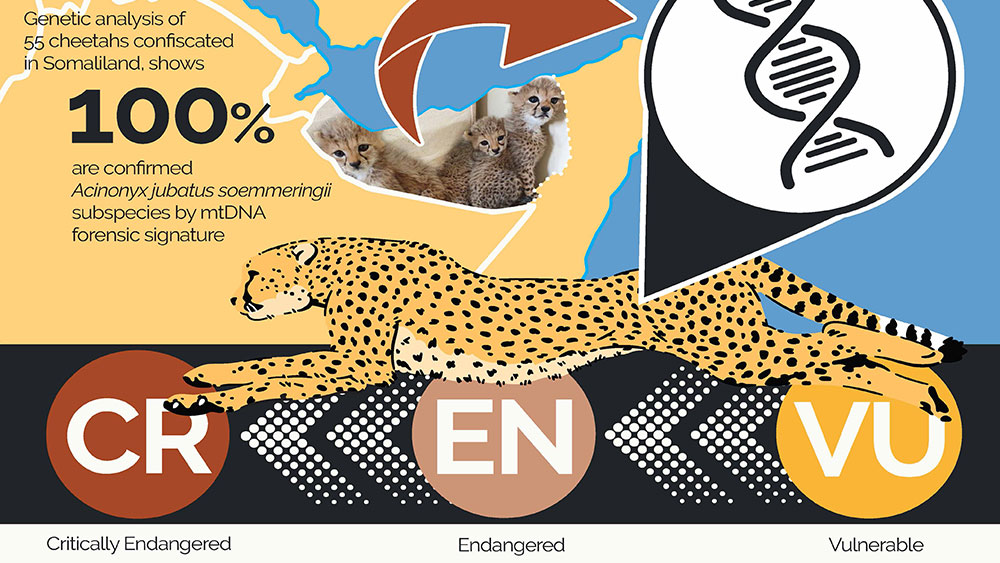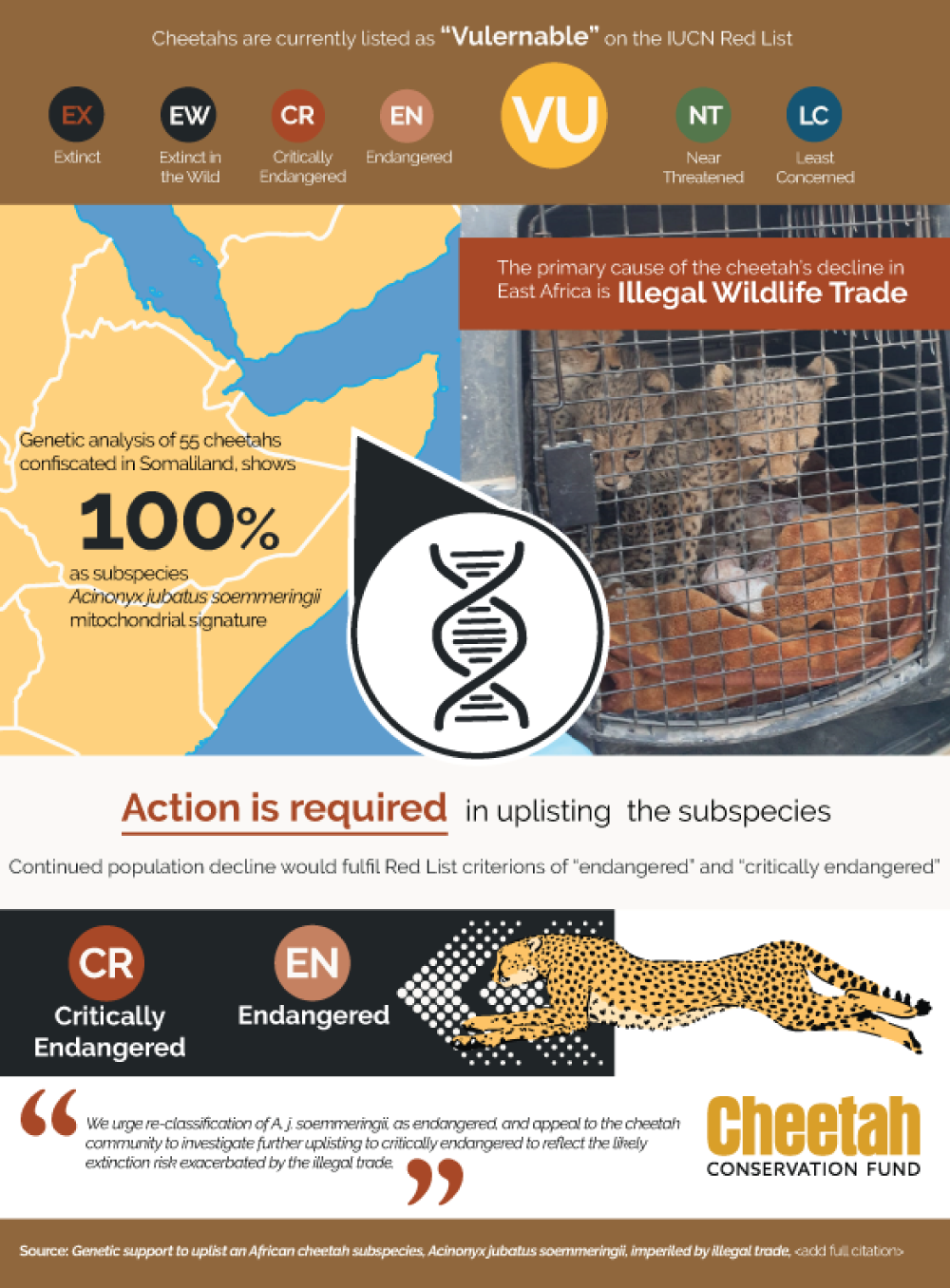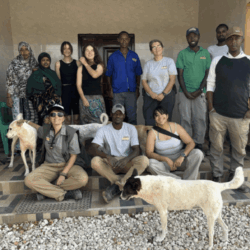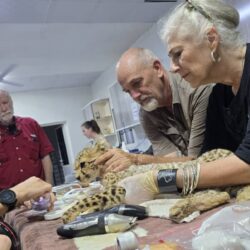CCF’s Landmark Research Reveals Impact of Illegal Trade on NE Cheetah Subspecies
-

- by Anne Schmidt-Küntzel December 21, 2023

Article Summary: “Genetic support to uplist an African cheetah subspecies, Acinonyx jubatus soemmeringii, imperiled by illegal trade
Research authors: Anne Schmidt-Küntzel, Shira Yashphe, Hafeni Hamalwa, Shukri H. Ismail, Patricia Tricorache, Bruce Brewer, Stephen J. O’Brien, Laurie Marker
Our team at the Cheetah Conservation Fund (CCF) just published a significant research paper, ‘Genetic support to uplist an African cheetah subspecies, Acinonyx jubatus soemmeringii, imperiled by illegal trade,’ in Conservation Science and Practice. This study was able to provide evidence that the illegal wildlife trade of the Horn of Africa targets the Northeast African cheetah, highlighting the pressures that this subspecies is subjected to. The evidence we were able to contribute was pivotal in the IUCN’s decision to uplist this subspecies to ‘Endangered’ on the Red List.
The global wild cheetah population has seen a drastic decline over the past century, with current worldwide numbers as low as approximately 7,100 mature individuals. Despite these alarming figures, cheetahs have been classified only as ‘Vulnerable’, with 2 cheetah subspecies (northern and Asiatic cheetah) classified as ‘Critically Endangered’. Our study also attracts attention to the underreported but critical threat of illegal wildlife trade, especially in live cheetah cubs for the pet market.

Between 2010 and 2019 a study produced by present and past CCF staff estimated that over 4,000 cheetahs were involved in the illegal wildlife trade in that time. Of those, close to 500 were recorded in Somaliland. This is a huge offtake given the low cheetah numbers in the region. So of course, the big question was: where do they come from?
In our study, we performed a genetic subspecies assessment on 55 cheetahs confiscated in Somaliland (corresponding to the same time period (2010-2019). Those cheetah cubs require intensive veterinary care on arrival, with a mortality rate of approximately 20% in the first month post-arrival alone, so we had access to plenty of sample material that we could use for our genetic analysis. Tissue samples were processed in our Conservation Genetics Laboratory in Namibia. Our DNA analysis, including mitochondrial control region sequencing, revealed that all sampled cheetahs matched the A. j. soemmeringii subspecies. This finding indicates that most trafficked cheetahs in the Horn of Africa are sourced regionally from this subspecies.
While this was not entirely unexpected based on unverified (and unverifiable) intel, the finding is alarming: With an estimated free-ranging population of A. j. soemmeringii between 260–590 mature individuals, the illegal trafficking directly from this subspecies represents a significant and sustained off-take. This, coupled with general threats like human-wildlife conflict and habitat loss, justifies the reclassification of this subspecies to ‘Endangered’ (and possibly even ‘Critically Endangered’) based on the extinction risk being exacerbated by the offtake from the illegal trade.
Our collaboration with the Government of Somaliland and the Ministry of Environment and Climate Change (MoECC) has been crucial in this research. The Hon. Minister Shukri H. Ismail Bandarei has been at the forefront of combating poaching, contributing significantly to our study.
At CCF, we are committed to reversing the decline of cheetah populations through rigorous research, advocacy, and collaboration. Our findings not only highlight the urgent need for conservation action but also call for increased global attention and resources to protect these magnificent animals.
Related Reading
-
November 23, 2025
Canadian Veterinarian Reunites With Rescued Cheetahs – Somaliland



